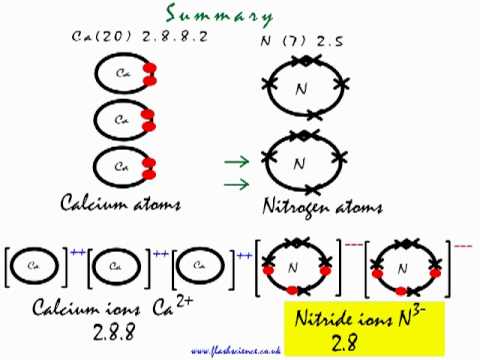What are some examples of ionic formulas?
1 Answer
Strontium Fluoride is an Ionic compound , with formula
Let us see how we got the answer; Look at the electronic arrangement of Sr and F atom.
Sr ( Z= 38) has electrons with following electronic configuration. 1
It loses two electron in its 5s subshell to achieve stability and forms ion
F ( Z=9) on the other hand has nine electrons and wants to gain one more electron to achieve stable noble gas configuration.Fluorine atom on gaining one electron forms negative fluoride ion,
F( Z=9) = 1
Two Fluorine atoms gains one electrons each ( total of two) from one Sr atoms, each Sr atom loses two electrons ( one each) to two chlorine atoms , in this process each Sr atom becomes
so in all we have one
so the formula becomes Sr
Look at the electronic arrangement of Ca and N atom.
Ca ( Z= 20) has 20 electrons with following electronic configuration. 1
It loses two electron in its 4s subshell to achieve stability and forms ion
N ( Z=7) on the other hand has seven electrons and wants to gain three electrons to achieve stable noble gas configuration.Nitrogen atom on gaining three electrons forms negative nitride ion,
N ( Z=7) = 1
Two Nitrogen atoms gains three electrons each ( total of six) from three Ca atoms, each Ca atom loses two electrons (total of six) to two Nitrogen atom , in this process each Ca atom becomes 
so in all we have three
so the formula becomes

